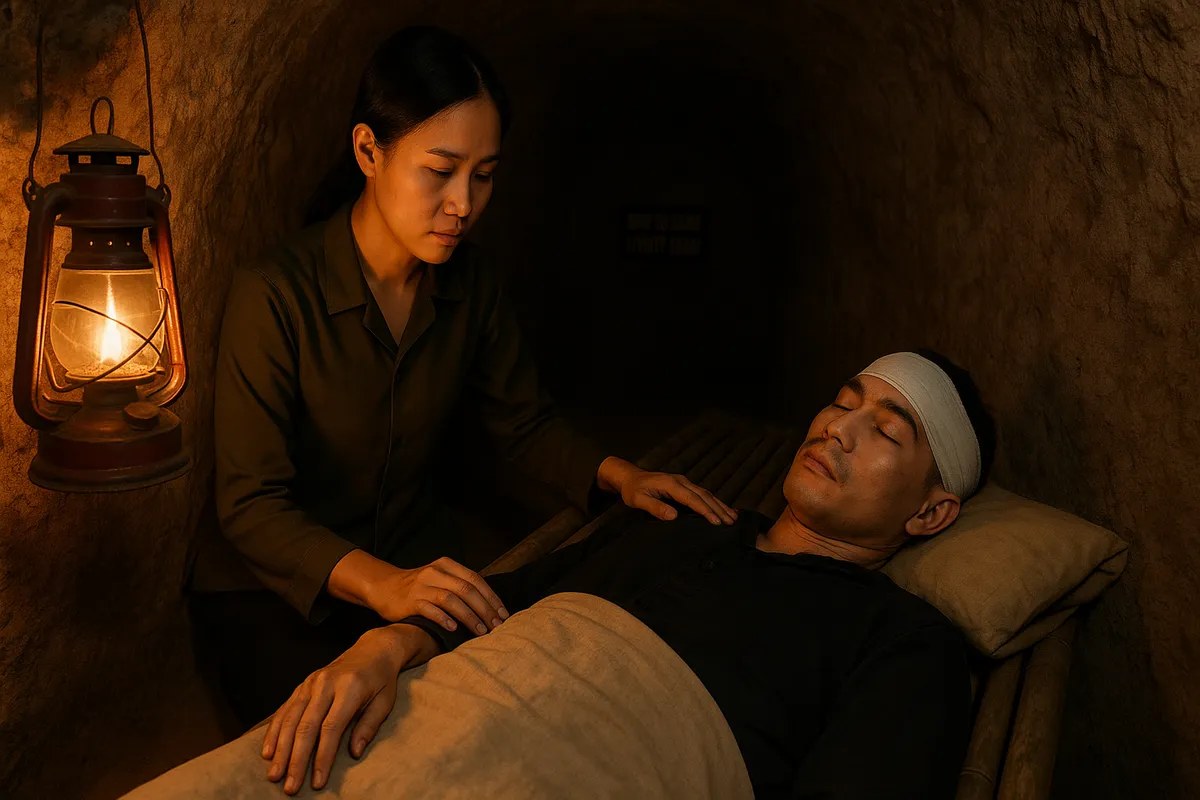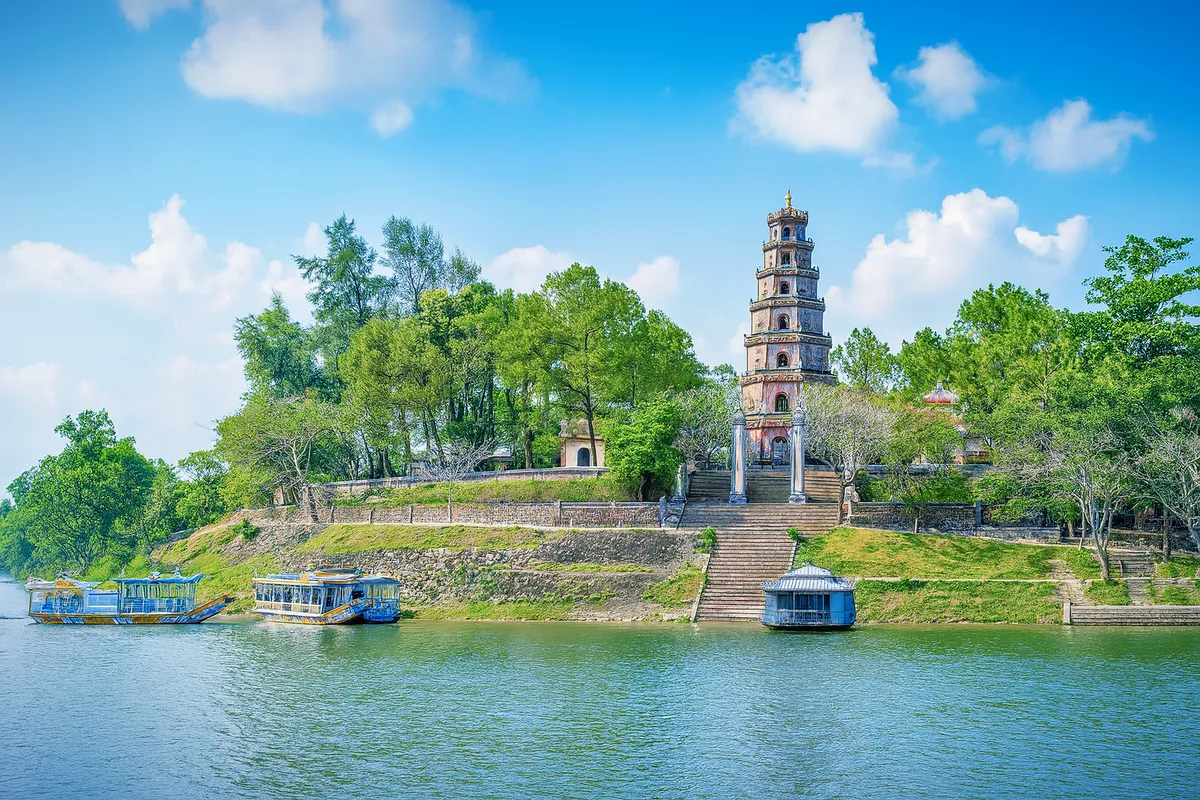Vinh Moc Tunnels - An underground survival village during wartime
- Tuesday, May 27, 2025, 20:49 (GMT+7)
Vinh Moc Tunnels - An underground survival village during wartime
Beneath the reddish brown soil of Vinh Linh, Quang Tri, there once existed a parallel world. No noise, no towering buildings, no shimmering lights. Only earth, darkness, and a quiet, unyielding will to survive. This was Vinh Moc, an underground village carved into the earth with three distinct levels stretching nearly two kilometers. Here, more than ninety people lived through the war years with sheer survival instinct and an unwavering desire to stay alive. As if letting go would be a betrayal to the land that held them, inch by inch.
Vinh Moc does not present itself as a grand attraction with glorious beauty. There is no spectacle. What holds visitors here is the thick air of memory, a space where every inch of soil breathes history, sweat, blood, and tears. People do not come here to admire but to absorb. Not for entertainment, but for reflection. At Vinh Moc, visitors are not just tourists. They become witnesses.
The entrance is nothing more than a modest patch of earth, just enough for a person to bow down and descend. But this is not a bow to the past. It is a journey inward, into the core of a nation, where bravery does not shout but hides in every strike of a shovel in the night, every meal shared under the dim oil lamp, every silent birth within the cold, damp earth.
The tunnels were designed as a closed ecosystem. Three layers stacked vertically from twelve to twenty three meters deep, each separated by three to five meters and connected through passageways and vertical shafts. There was a medical room where wounds were tended with trust and herbal remedies. A common room where villagers gathered to discuss daily matters and hopes for tomorrow. Even a birthing room, where seventeen children were born. No sunlight, no hospital beds, no joyful laughter of infants. Only darkness, the strained breaths of mothers, and newborn cries echoing through the underground as a powerful declaration that life would not surrender.
This is what makes Vinh Moc extraordinary. Not just because it is the only three level tunnel system in Vietnam, but because the people who lived here did not merely hide. They lived. They studied, they loved, they built a true community in the dark. It was not just about surviving each day, but creating a real life, complete with social rhythms, as if to say to the world, we are still here, and we will not vanish.
The tunnel’s ventilation system is an engineering wonder. Over sixty air vents were scientifically placed and carefully disguised with vegetation, rocks, and even artificial mounds. As a result, the air inside stayed fresh, even deep below. A freshwater well remains crystal clear to this day, a vivid testament to human resilience and ingenuity. Narrow paths lead straight to the sea, once routes for supplies and military movement, still bearing the footprints of those who walked the line between hope and danger.
Unlike the more famous Cu Chi Tunnels, known for their strong military character, Vinh Moc stands as a profound civilian symbol. It is not just filled with traps, spikes, or tactical exits, but served as a full-scale living space underground. Vinh Moc does not narrate war with loud explosions or towering monuments. It does not demand fear, nor enforce reverence. Sometimes, just standing by the moss-covered entrance, watching the dimly lit earthen stairs disappear into silence, is enough to stir deep emotion.
For over two thousand days and nights, not a single resident of Vinh Moc lost their life to bombs. This miracle astonishes even foreign military experts. But miracles are not born from luck. They are built from persistence, from planning, from unity, and from human connection. Every handful of soil lifted by cracked hands, every arched ceiling held by handcrafted skill, every chamber braced by the spirit of one for all. Here, the ground itself protected life, not just physically, but spiritually.
Today, Vinh Moc is a living memory. It is not locked behind museum glass. People can still touch the old earthen walls, walk the narrow paths once used as lifelines. Artifacts like the Hoang Cam stove, oil lamps, tea sets, and handmade clothes remain not for display, but to tell a story. Each item, each room, each drop of water from the vaulted ceilings whispers one truth: we once lived, fully, and with dignity.
This is why young people cannot remain indifferent. Vinh Moc is not just for history lovers. It is for anyone living in peace who may have forgotten the price of peace. It is a wake up call in an age where the past is often dismissed. A place where even the most vibrant, busy, and dream filled souls may pause and wonder why they have never come here before.
You may take a photo at the moss covered entrance, where the underground light casts a thoughtful glow on your face. You may capture the never dry freshwater well, where water is not just survival but the soul of an entire community. But the real things you carry home cannot be framed. They are feelings, silences, and an unspoken reverence. A renewed view of the nation, of what once seemed lifeless in textbooks, now so vivid it seems to breathe.
If there is one place in Vietnam where stepping down brings you closer to something higher, it is Vinh Moc. A village beneath the earth. A silent epic written in soil, in humanity, in unconquerable will. And when you leave, you may feel something strange, as if you have just walked out of a sacred temple not built of stone, but of memory, more sacred than any monument.
Vinh Moc does not call out for attention. It simply endures, like a secret not meant for the masses, yet powerful enough to move anyone who enters. Come. To see that even darkness has its own light. And to understand that sometimes, what lies deepest is what touches the heart the most.

 CHECKIN.VN
CHECKIN.VN








Share on